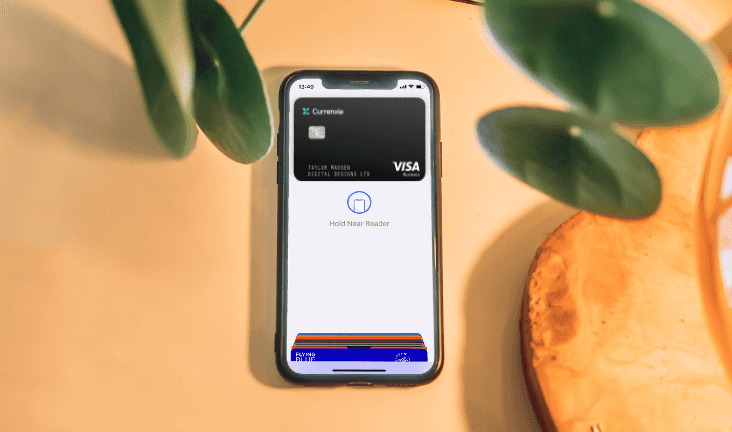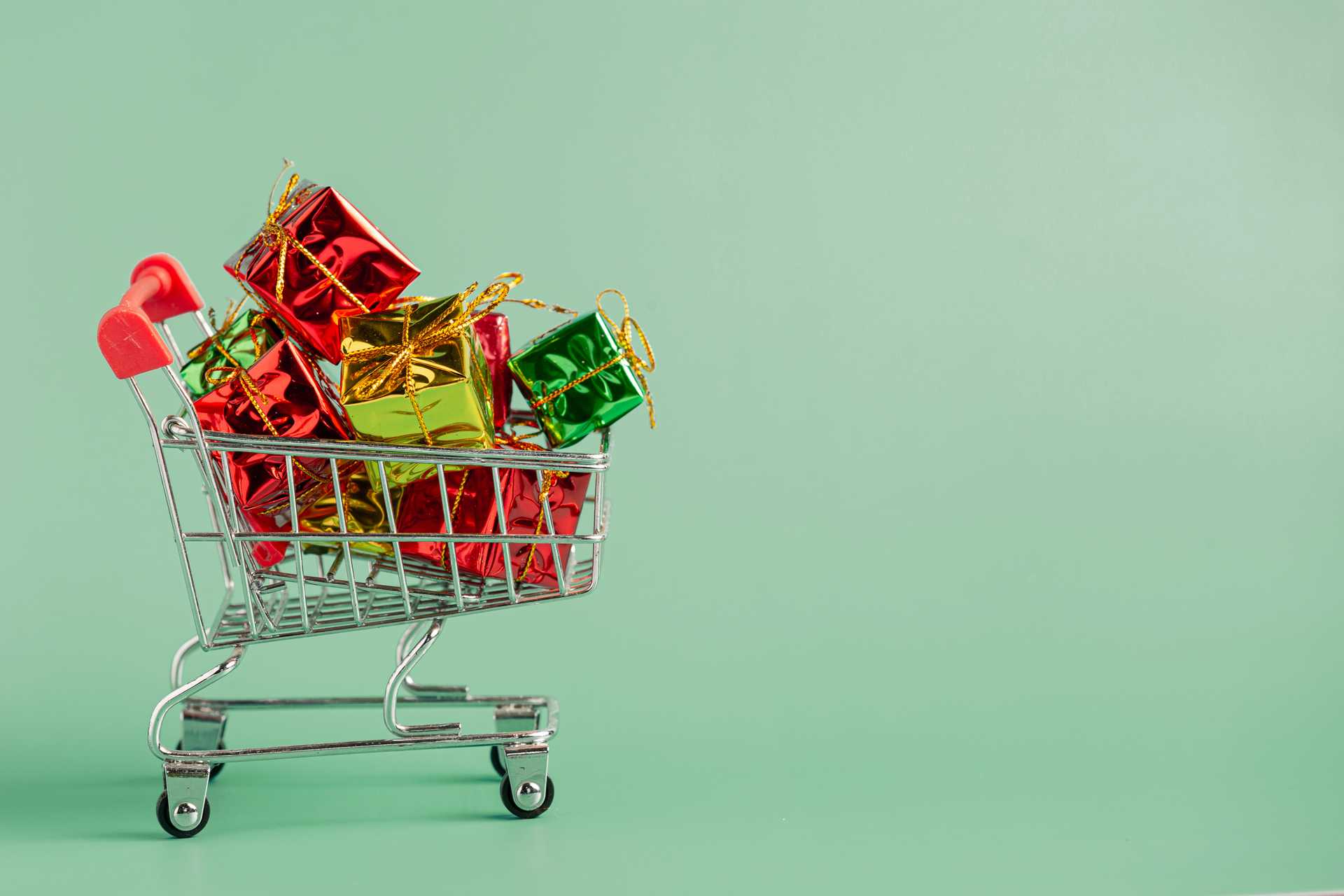
Articles
Payment Trends to Keep an Eye on in 2021
26.04.2021
The massive impact of the pandemic has upended most industries for better or worse. While many business owners were forced to respond to the unprecedented demands of COVID-19 by ramping up their digital capabilities, no one could have predicted the acceleration of certain trends in the payments space.
The reality of avoiding contact with others has driven the transformation of payments in a matter of months instead of years. In the process, consumer behaviour and expectations have changed for good, and the industry has seen an onslaught of new competitors and a faster pace of digitisation.
For example, as the pandemic forced consumers to shift their shopping behaviour online, eCommerce sales skyrocketed. In Southeast Asia, the market showed a decade’s worth of growth in the past year alone — with the eCommerce industry expected to expand by an additional 5.5% by the end of 2021.
And while we’re likely facing yet another year of uncertainty as the world attempts to recover, what’s definite is that the digital transformation of payments will only get faster both globally and locally in SEA. Here’s what to expect:
#1 - A Continued Surge of Contactless Payments
However long the pandemic lasts, it’s clear that what was once considered alternative payment methods are quickly becoming consumers’ preferred means of transacting. Low-cost and seamless to implement, not only are modernised payment methods expected to outpace cash, but the use of contactless payments allows small businesses to enter the digital economy more effortlessly with the simplicity of an app.
Before the pandemic, the number of cashless payments was already rising globally (increasing by 14% between 2018-2019), with the APAC region forging itself as the global leader in non-cash transactions — a recent consumer survey found that 61% of SEA countries prefer using cards over cash.
However, as more customers and workers avoided touching keypads and handling cash in a bid to curb the spread of the virus (on the advice of the World Health Organization), up to 91% of APAC consumers transitioned to contactless payment methods. In fact, the monumental increase in the use of digital wallets, mobile applications and contactless cards has supercharged the trend of digital payments so rapidly that it’s overtaken the growth of debit and credit cards.
In the SEA region, Singapore leads the way with 66% of its consumers having already developed contactless payment habits during the pandemic, with 78% admitting they would prefer using digital payments once the world returns to normal. These figures are followed by 40% of Malaysian consumers who have increased their use of digital payment options in the wake of the crisis.
- eWallets
It’s estimated that more than half the world’s population will use mobile wallets by 2023, increasing from 2.3 billion people in 2020 to nearly 4 billion in two years’ time. In SEA, 22% of consumers are already completing their transactions via eWallets (an increase of 14% since 2019). Additionally, 49% of consumers who have a commercial bank account are also reported to be using eWallets — a number that’s predicted to increase to 84% by 2025.
A new study found that Malaysia has the highest mobile wallet usage in SEA (40%), followed by the Philippines at 36%, Thailand at 27%, and Singapore at 26%. Low eWallet acceptance by merchants is considered the main hurdle to greater eWallet usage — a factor that’s expected to be easily overcome due to the ripple effects of the pandemic.
- QR Codes
In the new age of contactless payments, QR codes have shown their value thanks to their seamless experience — not just for payments but also for viewing menus, placing orders, unlocking city bikes and sharing contact details.
Asia dominates the globe in terms of QR code adoption, with 15 million SEA households scanning QR codes last year alone. With over 58% of SEA consumers being aware of QR-based payment services, and considering its convenience, the QR code landscape is expected to grow rapidly in the coming years.
#2 - The Expansion of Digital Payments
Thanks to the ubiquity of the internet and easy access to smartphones, businesses across the SEA region needed to accelerate their digital transformation in order to survive the effects of the black swan event, resulting in an explosion in digital payments.
While the digital banking scene in the region was already thriving before the pandemic as it leveraged on the digital needs of customers and SMEs, the COVID crisis saw many companies across all sectors switch to cloud-based digital payments platforms so that they could still pay suppliers and get paid while incumbent banks were shut due to lockdown restrictions.
Today, over 70% of the population in Thailand, Malaysia, Singapore, Vietnam, Indonesia and the Philippines is online — with tens of millions only joining the world wide web in 2020. As a result, digital payments grew by 3% last year, rising by US$20 billion to US$620 billion, with them expected to reach US$1200 billion by 2025.
The eCommerce industry will also steadily continue to rise in the region, forcing merchants to keep up with the times. In 2020, the SEA eCommerce market grew by a staggering 63%, reaching a total volume of US$62 billion.
In Malaysia, nearly half of online purchases are made via digital banking apps (46%). This is followed by Vietnamese consumers who have started enjoying the convenience of online bank transfers (more than 26% of shoppers) but primarily use credit and debit card payments (35%). Indonesians (34%) mainly use credit cards for their online purchases but not as much as Singaporeans who rely heavily on plastic forms of payment (75%). Consumers in the Philippines, however, still prefer using cash (37%) for their online purchases, followed by bank transfers (29%) and then credit/debit cards (22%).
With the world of payments opened up to consumers, it’s expected that by meeting the needs of the masses, SMEs will be able to offer the same capabilities as the biggest brands in 2021. Online payment solutions have ensured that scale is no longer an issue, no matter how big a business or how small.
#3 - More Being Bought on Mobile
As businesses started to fully embrace digitisation to sell in different ways in response to the crisis, mobile commerce (mCommerce) saw a meteoric rise in popularity. In the past six months, 79% of mobile users made an online purchase using their mobile devices. On track to take over eCommerce, mCommerce penetration in 2020 was over 79% in Indonesia, 74% in Thailand, 69% in the Philippines, 68% in Malaysia, 61% in Vietnam and 56% in Singapore.
The Philippines remains one of the fastest-growing eCommerce markets with most of its consumers relying heavily on their mobile devices to make their online purchases — the number of social media users in the country rose by 5.8 million people in just 9 months in 2020.
Mobile apps are also expected to surge over internet browsers when it comes to completing payments. While it’s a given that eMerchants need to have a mobile-friendly website, it’s not going to be enough to be able to succeed in the eCommerce space moving forward. It’s predicted that 2021 will be the year that mobile shopping apps boom, with them ultimately becoming the future of mCommerce growth.
In fact, it’s estimated that 85% of consumers prefer mobile apps to mobile websites, which means that shopping apps are resulting in higher conversion rates than mobile websites. It’s a trend that eSellers can’t ignore if they want to stay relevant in 2021 and beyond.
#4 - A Shift in the Membership Model
Retaining a customer costs roughly five times less than acquiring a new one, so it’s no surprise that companies want loyal customers. And one of the best ways to ensure your customers remain loyal to your business is to reward them.
Considered the future of customer loyalty, more and more brands are offering memberships that see consumers pay an annual fee that, in effect, encourages them to buy more by giving them instant benefits.
For example, in Malaysia, there’s been a steady increase of consumers adopting car subscriptions from GoCar and Flux. In Singapore, Grab launched a subscription to Bubble Tea and GrabFood n-delivery fees plans in response to the city’s lockdown.
Nearly 60% of shoppers cited that earning rewards through membership programmes outweighed being presented with cheaper alternatives. Thanks to personalisation, companies that utilise membership programmes are also able to better target their customers by offering an engaging, relevant and seamless experience.
Needless to say, you can expect to see more SEA companies offering memberships in 2021 as industries seek to recover by offering a new kind of customer relationship and the data that goes along with it.
#5 - Buy Now, Pay Later Peaking
With unemployment rates skyrocketing due to pandemic-induced furlough measures, consumers across the globe have been faced with continued financial strain. As a result, more shoppers are relying on interest-free ‘buy now, pay later’ (BNPL) schemes over traditional payment methods because they offer flexibility while allowing consumers to continue their spending habits, despite their current financial instability.
The concept has been widely adopted in Southeast Asia, with the APAC region expected to become the world’s fastest-growing market due to the surge of the region’s internet users. Over 70% of adults in SEA (about 450 million) are reportedly ‘underbanked’, meaning they don’t have access to a basic bank account, credit cards or a savings account. BNPL aims to eradicate this hurdle by tapping into a market of over half a billion potential users by offering them a simple, affordable solution.
Driven by payment providers like Singapore’s Hoolah, which reported a 7-fold jump in transaction volumes in the past six months, the modernised version of layaway plans is simpler than credit cards in the sense that a credit check isn’t needed beforehand and approval is pretty much instantaneous.
With a fair amount of uncertainty expected to last into the near future, it’s clear that businesses that offer flexible payment solutions to their customers can better mitigate their losses. The transparency offered by BNPL schemes makes it easier for shoppers to commit to checking out, which is ever-appealing to any merchants.
#6 - Checkoutless Experiences Will Become Mainstream
Two years ago, eliminating checkout counters completely may have seemed implausible. However, 2021 will likely see more stores finding various ways to make physical checkouts obsolete.
Amazon were unsurprisingly the pioneers of checkoutless experiences with the launch of their Amazon Go stores a few years back that saw each item sit on top of a weight sensor. When a customer lifted the product, they triggered the sensor and were assigned the item via video.
The idea of robo-stores was quickly replicated by Chinese company, BingoBox which launched its first unmanned store in 2016. The tech company now has a chain of over 500 franchised outlets across China, Malaysia, South Korea and Taiwan.
More cost-effective solutions for checkoutless experiences include QR codes, smart shopping carts and mobile apps. Instead of having to go to the counter to pay in-person, customers can scan their items with their phones’ cameras and head out the door. They can also order and pay for their items online and simply collect and go if they’re looking to avoid delivery costs.
Improving customer experience, speeding up the shopping process and eliminating checkout lines is worth an estimated US$38 billion. With the need for traditional cashiers eliminated, retailers can reallocate staff and financial resources that were being spent on checkout hardware elsewhere for greater profit.
Convenience stores are already big business in Southeast Asia (at last count, there were over 73,000 registered across the region). Coupled with the increased need for extended social distance measures and hygiene concerns, there is plenty of opportunity for small business owners to tap into the staffless store market.
#7 - Credit Cards Will Diversify
As the virus continues to ground travellers across the world, credit card benefits have had to stray from travel-specific offerings like air miles and hotel booking discounts. As the global uptick in credit card usage reaches new heights, it’s expected that credit card rewards will primarily focus on everyday items and experiences in 2021 — i.e. grocery shopping and home goods.
From flexible card offers, waived annual fees and cashback options, credit card issuers will continue to tap into their customers’ most fundamental needs in a bid to retain them.
It’s also predicted that the global demand for biometric technology will increase in 2021, where users are able to make touchless payments via a fingerprint stored on their credit card. Capable of holding your payment details in one place, the use of biometrics can confirm a buyer’s identity which is especially important as cybercrime becomes a pandemic in its own right.
For consumers, using biometrics to approve purchases would make the entire payments process faster, too — a move that would undoubtedly be encouraged by shoppers. In a recent study, almost half of Southeast Asian shoppers said they would prefer using a biometric sensor on their credit or debit card instead of a PIN.
#8 - Increase in Crypto Investments
COVID-19 accelerated the notion that the digital currency era is truly upon us. All major fiat currencies exist in digital form, allowing consumers to seamlessly send or receive cash through digital forms of payments.
Predominantly seen in most parts of Asia, countries across the world are already going cashless, and governments and well-known brands like Apple, Microsoft and Google are toying with the idea of creating their own crypto and digital currencies. With the pandemic wreaking havoc on the stock market, it’s not surprising that money is looking elsewhere to grow.
Thanks to their spiking value, low fees and lack of political risk, and commonly referred to as ‘digital gold’, cryptocurrencies are seen as a hedge against inflation of fiat currencies, currently caused by governments around the world spending trillions on COVID-19 relief.
As consumers’ needs shift from spending to saving, many have started investing large and small amounts of their hard-earned cash into cryptocurrencies. This trend is echoed in Southeast Asia that’s seen an increase in crypto adoption, primarily in Vietnam and the Philippines where 21% and 20%, respectively, of consumers said they used digital assets last year.
However, while cryptos like have yet to be adopted as a legitimate, widespread payment method, in 2021, financial experts predict that we will likely see the appeal of investing in cryptocurrency soaring — especially after Elon Musk’s Tesla bought $1.5 billion of the crypto, causing its value to spike.
Change With the Times
More than anything, the COVID-19 pandemic has shown the payments industry how agile and capable it is in terms of remoulding itself to fit the needs of consumers. It’s up to businesses to keep up. Whether it’s by emulating all of the above, or simply adopting one — by acknowledging this year’s payment predictions, Southeast Asian companies can outshine local and global competitors and emerge as a trusted organisation that customers can rely on.
Article originally published: https://techcollectivesea.com/

